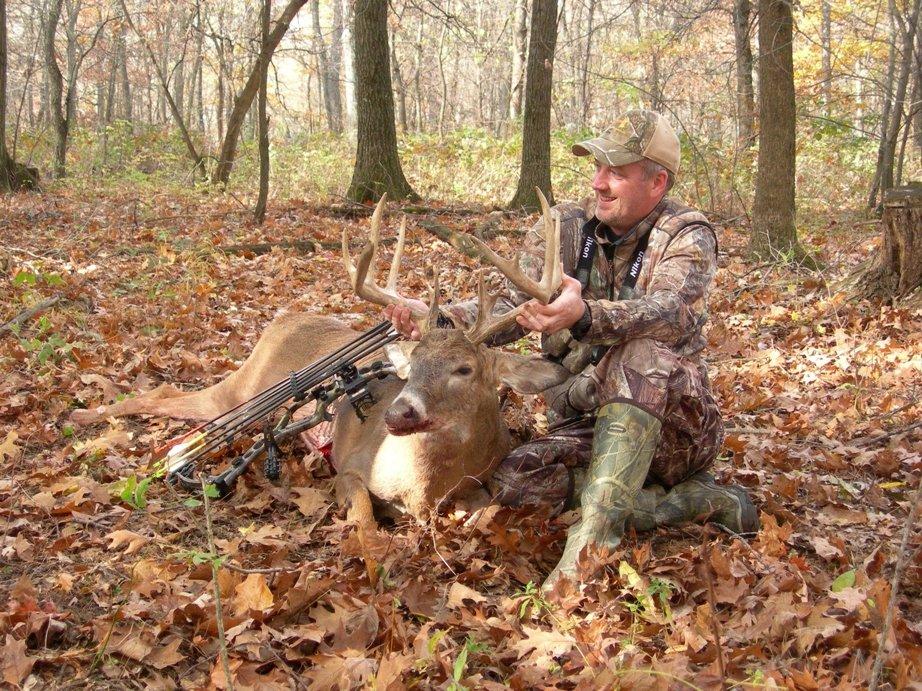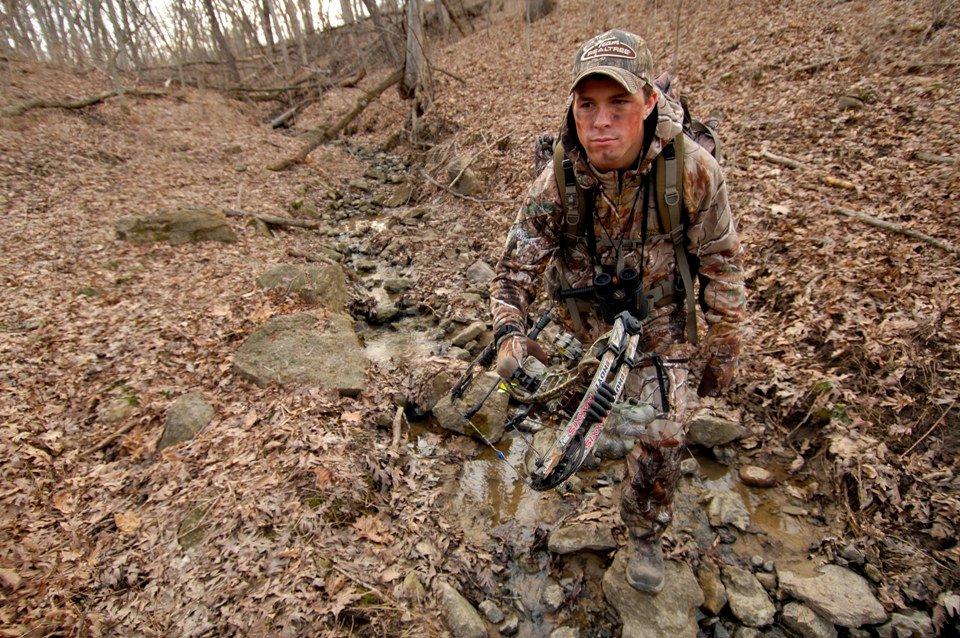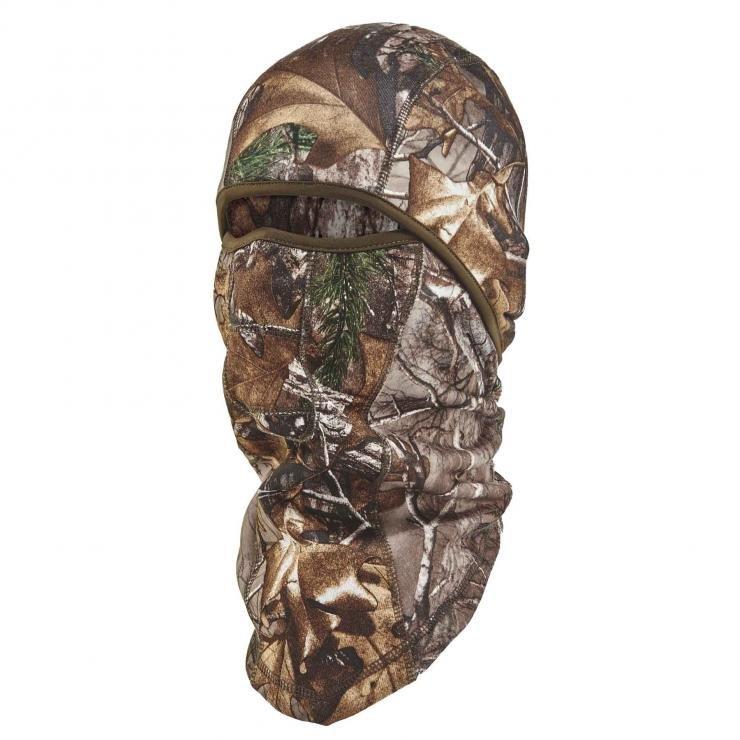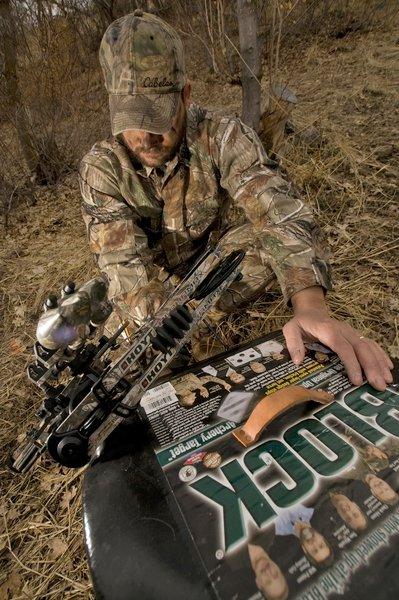Don't Let These Bowhunting Mistakes Ruin Your Hunt
Bowhunting is never easy. Animal behavior, hunting pressure, food and water supply, and weather can all change on a dime and make things tough. But nothing is more frustrating than letting things within our control foil our attempts to make a kill. Over the years, I've certainly made my share of bowhunting mistakes, but I'd have to say the following are probably my weakest links. I'm betting they are for most other bowhunters as well.
1. Buck Fever
Buck fever ruins bowhunting success more than any other factor, and ridding ourselves of it completely is virtually impossible. However, we can do a few things to help lessen it.
One thing that has helped me personally is to stay mentally "busy" while I'm staring at a big buck. I do this by running through a very specific pre-shot checklist. The program is made up of simple but effective steps to ensure a better shot outcome. Thinking about the list, most importantly, keeps my mind preoccupied with something other than the visual presence of seeing a big deer. This somehow calms my heartbeat, so I can keep my composure and make a good shot.
Everyone's checklist will vary, so experiment with what you think is most important based on your own experience.
Gear Review: 2018 Hoyt REDWRX Carbon RX-1 Series in Realtree Edge
Mine goes like this:
- Determine the shot distance.
- Pick a spot and place an imaginary golf ball on the deer's chest (this is where I want the arrow to strike).
- Is the arrow path clear? (no limbs, branches, etc.).
- Visualize the golf ball again.
- Breathe properly.
- Place the sight pin on the golf ball. Don't force it still.
- Relax, Be Patient ... Settle In... 8. Back Tension. Keep Pulling. Aim. Aim. Do not punch the trigger.
Growing more familiar with the moment of truth is also helpful. There are two ways to do this: hunt every chance you get and practice mental imagery.
By shooting plenty of does, varmints and small game, you'll find yourself facing heated shots more regularly. This will make you more comfortable and accustomed at handling higher-stakes shooting at bigger game.
In addition, using mental-imagery exercises is yet another tool you can use to help combat buck fever. It works because your mind has a hard time differentiating real-life situations from imagined ones. Such vivid, mental details will trick you into thinking that you truly are experiencing real-life hunting and buck fever, but only in your dream can you play the script back over and over until you come out on top and make a perfect shot.
As you practice this tool over and over, it'll become more second nature and effective. Don't dismiss it as a bunch of mumbo-jumbo, because it's not. Professional athletes are taught this skill early on in their careers by professional coaches because it works.
2. Opening Day Warm Up
As humans, we like to "settle in" to things, and we often approach hunting in the same way.
However, this mindset rarely yields favorable results, especially in hunting whitetails. The first day on stand happens to be the best. Why? Because the hunting area is still fresh and uncontaminated, and the odds of catching a big buck off-guard and totally by surprise are at their peak. There is no warm-up for what's to come.
Teach yourself to get psyched about opening morning, as if it'll be your only chance on stand. This attitude will keep you alert and ready to strike.
The same goes for stalking mulies, elk or pronghorn. Make every stalk, every possible shooting opportunity, as if it'll be your only one. Follow the motto: "There is no tomorrow," because the next day could bring bad weather, more hunting pressure, no animal sightings, and so on. Then what? Control what you can. Exercise patience when needed but be aggressive when you can. You'll sneak up on more game doing this.
3. Lacking Stealth
Some of today's bowhunters look like fashion models traipsing through the woods. Unfortunately, many of them choose their wardrobes based on catalog descriptions and camo coordination rather than real-life performance, which is a bad mistake. The result can be noisy, bulky, less-than-stellar garment function and blown shot opportunities.
Silence and bowhunting are intertwined, so if your clothes or gear items scratch, crackle or squeak, you'll blow your cover when it means the most.
Don't hunt with new stuff unless you've tried it around the house or on small-game hunts. Such tests will prove invaluable and let you know what's bowhunting functional and what's not.
As a general rule, stay away from "waterproof" or "windproof" clothing, unless you hunt in the worst type of weather. On average, these garments are noisier. I prefer wool, fleece or well-brushed poly/cotton fabrics, without waterproof / windproof membranes.
The same goes for backpacks. Make sure pockets offer appropriate organization of calls and accessories with zippers that are quiet. You'll be getting in and out of stuff, so this is critical.
Same goes for your treestand. Make sure you hang yours in the backyard for several days at a time, then check for squeaks early in the morning while the chill and dew are present. All noises must be fixed before opening day.
4. Poor Scent Control
Gear Review: Ergodyne N-Ferno 6823 Wind-proof Hinged Balaclava in Realtree Camo
As the hunting days go on, your scent will spread more thoroughly along your entry and exit routes leading to your ambush. More deer will cross this scent path and become alarmed by your presence.
The same goes for wind currents that blow your odor around. No wind is consistent, and your stench will spread. Period. As the stink factor rises, the chances of seeing a big buck go down.
There is no such thing as doing your best with scent control. You either do it right, or it will prove futile.
The proper way is to use a proven system. This includes showering before the hunt with scent-free soaps and shampoos, using a scent-free towel, and then decontaminating all hunting gear by washing, spraying or wiping it down with scent-free products. Then, once they are scent free, store them in scent-free bags or bins to keep them that way.
Make it a routine to transport all your hunting items in your vehicle this way, and only expose them to natural "outside" elements. Follow the same system as you return from your hunt.
Using all the scent-free soaps, sprays, wipes, and storage bag / bin procedures can be a real pain. But it's like homework from our school days. Yeah, it's a nuisance, but it pays off on test day.
5. No Broadhead Practice
I see it every season: bowhunters scrambling at the last-minute to dial-in shooting gear. The usual culprit is poor broadhead flight, and the fix is not always easy.
For best results, be sure to test-shoot broadheads three to four months before opening day. This will give you plenty of time to experiment and to begin practicing with broadheads by late summer or early fall.
Mechanical heads aren't free from this rule. Nearly all of them have exposed blade surfaces and they will hit differently compared to field points. Shoot all types of heads to compare impact points so you can make the necessary adjustments well ahead of schedule.
Broadheads have a way of amplifying the slightest bit of error in bow setup, shooting form, and so on, so the heads themselves aren't always to blame. This is why you need ample time to diagnose the issue and to resolve the problem.
6. Practicing the Wrong Way
Once you do get your broadheads shooting well, remember that regular backyard practice isn't enough. You need real-life hunting practice to maximize your potential in the woods.
This means "suiting up" with all your hunting garments, facemask, gloves, and boots, and climbing a tree to shoot from an elevated platform. For best results, use a deer target and conduct these drills early in the morning or late in the evening to make it even more realistic. Such practice will go a long way for increasing your confidence.
7. Inadequate Scouting
Any experienced hunter will tell you: "be sure to scout more than you hunt."
When opening day rolls around, if you don't find yourself oozing with confidence about your hunting area, chances are you didn't scout enough. As I stated earlier, the first day on stand is your most crucial. You must make it count.
Serious bowhunters know the importance of this and begin scouting from post-season all the way through late summer and early fall. This gives them a better perspective on the best farms to hunt, how deer travel, and where the hottest ambush locations exist.
8. Cutting It Short
Nobody likes to sit on a little padded tree seat for hours on end, especially when nothing's moving. However, staying put and hunting throughout the late morning and midday hours can seriously pay off. For years, record-book statistics have shown us that a large percentage of bucks are actually shot during these "off" midday hours.
To stay out longer, you'll need to be warm and comfortable. This means wearing lots of layers and the proper footwear, using heat packs and extra-thick seat cushions when necessary, and having lots of snacks and water to satisfy your appetite.
Even on days when you don't expect to hunt through lunchtime, make it a habit to be ready to. You just never know when things may pick up, and you can't risk missing out.
9. Scared of the Dark
It's certainly comforting to walk to your stand using a bright flashlight or headlamp, but it could send off an alarm signal to deer. It's better to man up and travel in the dark.
If darkness and safe navigation aren't in your vocabulary, then consider using a lamp with a red or green lens. These colored filters subdue a light's projection, making it more difficult for deer to see it and grow suspicious.
10. Waiting Too Long to Shoot
There's a fine line with this rule, but generally speaking, it's best to take the first good shot that presents itself. Don't wait for the absolute perfect shot, because it rarely happens.
If a buck walks within range and you detect a shooting window and an appropriate shot angle, don't dawdle -- get to full draw immediately. This means drawing well ahead of time as well, so you're ready to fire at a moment's notice. You don't want to try and cycle your bow when a deer's in plain view. It'll likely catch the movement and ruin things.
Patience is a cardinal rule in effective bowhunting, but being overly patient can be bad. Learn to step your way through a complex shooting scenario slowly and methodically, but react quickly when you sense an opportunity. This just may be the only chance you get all season long.
Editor's Note: This article was originally published in June of 2011.
Are you a bowhunter wanting to learn how to accomplish your goals? Check out our stories, videos and hard-hitting how-to's on bowhunting.













